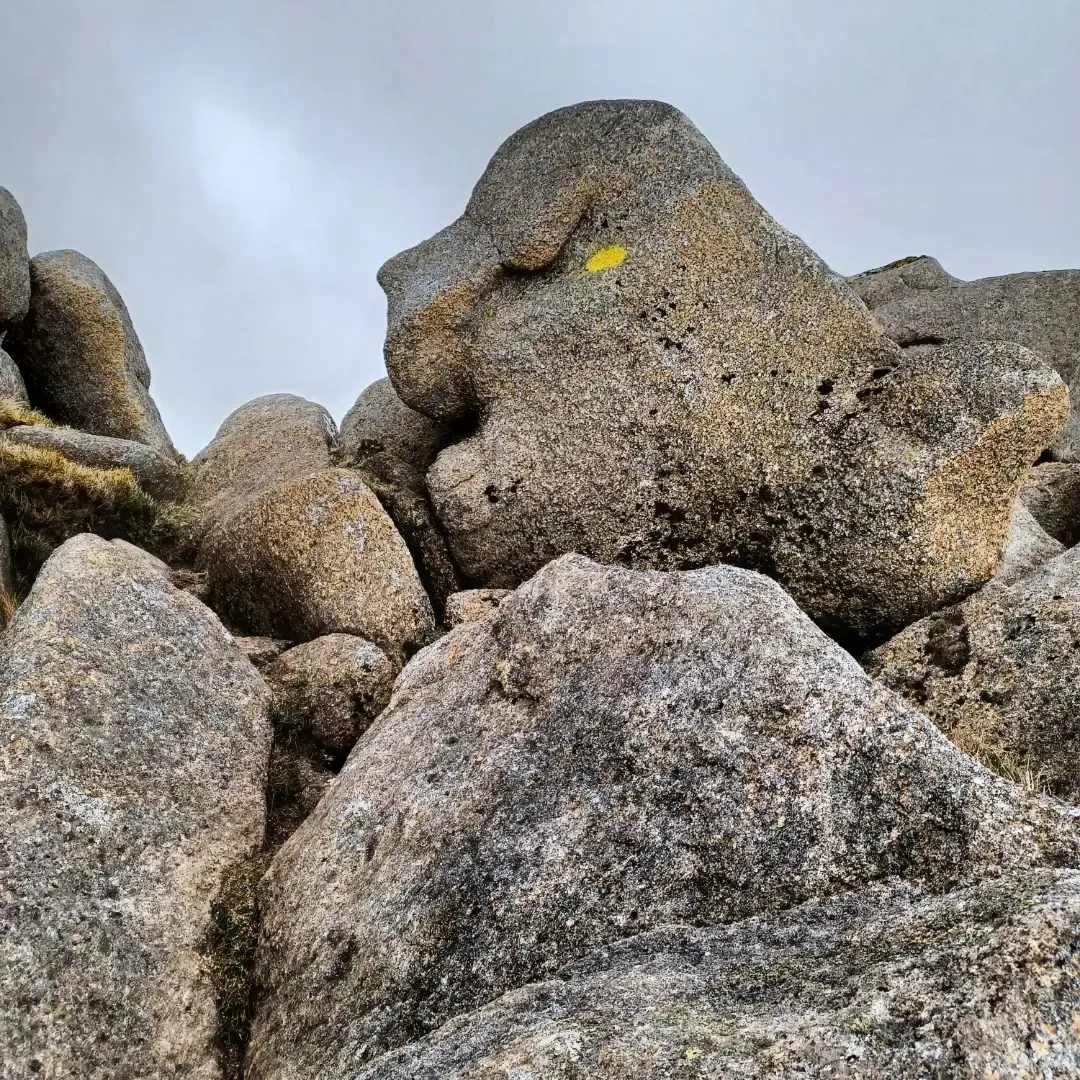Highland Kings Ultra is facing criticism after bright chalk waymarkers were found on rocks on the Isle of Arran in the days after the race was completed. The four-day 120-mile race from Glencoe to Arran, which brands itself as an “exclusive, luxury experience”, reportedly charges £15,499 per entrant and claims to be “one of the most sustainable endurance events in the world”.
Arran-based mountain leader Lucy Wallace discovered the yellow markers on Goatfell on 28 April, sharing her findings on social media. Goatfell – the highest peak on Arran – is classed as a Site of Special Scientific Interest (SSSI) due to the rare species of flora and fauna it contains.
Wallace says that many “event organisers say the use of biodegradable chalk goes against accepted practice,” as it takes a lot longer to wash off than advertised. She also told BBC Countryfile Magazine that “the lichens on the rocks in the Arran mountains are adapted to the acidic environment of the granite boulders.” As a result, anything that would “change the pH of the rock would fundamentally change the conditions they have adapted to. Chalk and other carbonates would raise the pH significantly.” Highland Kings Ultra has not yet shared any details on the chalk that was used during the race and whether it contains any chemicals that might have had this effect.
Wallace returned to the area on 2 May to find 35 waymarkers along a 2km section of the route.

Highland Kings has responded to criticism, releasing a statement on 3 May announcing that it “was always in our operations plan to have our team return to the route in the days following the event to remove all trace of the biodegradable chalk. This has now been completed as planned with every step retraced to ensure the markings are removed thoroughly and satisfactorily.”
However, it seems the race organisers had initially told the National Trust of Scotland (NTS) – which manages much of the land this race runs through, including Goatfell – that they wouldn’t be using physical signage during the race. “We had made prior contact with the organisers and had asked them not to use signs or drones on the hill and were told that there would be no signage at all but people marshalls only,” the NTS announced in its statement. Although the Trust has no control over the use of open landscapes under the Land Reform Act 2003 and the ‘right to roam’, it had expected “all events on Trust land to be operated on a ‘leave no trace’ basis.”

Highland Kings representatives have confirmed that “the team are absolutely reviewing waymarking for athlete safety for the future events.”
The use of wayfinders in ultrarunning is already a debated topic among the hill running community, with many arguing that self-navigation should be part of the practice. However, many races rely on heavy signage throughout, with many critics arguing that this is an attempt to ‘gentrify’ mountain running and the fells. Highland Kings Ultra has explained why it provided runners with waymarkers as well as GPS tracking and sports watches: “the route markers were planned to support athlete safety, as they were unfamiliar with the region and this type of terrain.”
This is the first Highland Kings Ultra event, describing itself as “the world’s first premium ultra.” The 40 runners – referred to as “pioneers” – were hosted in glamping tents and luxury campsites, with food cooked by Michelin-starred chefs, throughout the four-day endeavour. The significant entry fee also included seven months of coaching and support before the event, as well as a gala dinner on the final night and a copy of a professional documentary recorded throughout the race.
It's not the first time a race has been criticised for its use of biodegradable chalk. In 2019, IGO Adventures faced a similar backlash when markings weren’t removed quickly enough following its event in the Lake District. The company’s founder Bobby Melville explained his initial reasoning for using the chalk markings. “We used these markings as back-up signage, after our staked signs were removed, damaged or turned in misleading directions.”
It appears that since Highland Kings shared its statement on 3 May, much of the chalk has been removed, but it’s not clear whether the rocks and lichen will have long-term damage.
Kirstie Smith, another runner from the Isle of Arran, shared an update from her run yesterday evening.
Despite the race organisers’ attempts, it seems that some of the chalk markings are still visible, while some have reportedly not been removed, according to Lucy Wallace, who has received updates from other runners in the area.

